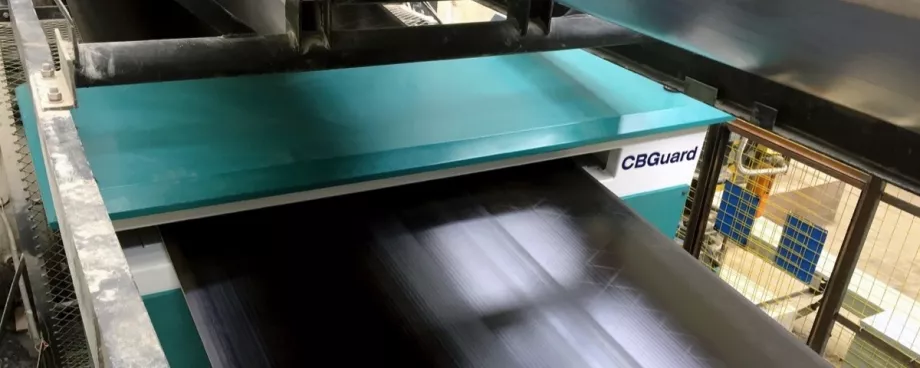An important component of predictive maintenance and accident prevention is the continuous examination and diagnosis of steel cord conveyor belts.

Up to now, many operators still commission service companies whose inspection personnel are usually equipped with portable devices. However, as we are currently experiencing worldwide, their use can be problematic or impossible due to travel restrictions. Apart from that, such examinations anyway only provide an inaccurate picture of the condition of a conveyor belt. On the one hand, the data must be interpreted by trained persons; on the other hand, mobile devices only capture parts of a conveyor belt, or they provide data that is too imprecise. In addition, inspections are only a snapshot, without the possibility of intervening in case of threatening defects that could lead to a total failure of the conveyor system.
In times of crisis, such as the current virus pandemic, it is even more important to use a self-sufficient, fully automated diagnostic system.
A fully automated Diagnostic System
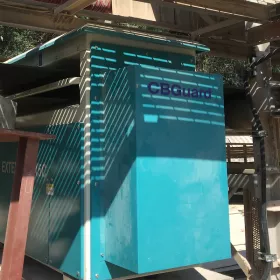
The almost maintenance-free CBGuard system by CBG Conveyor Belt Gateway provides complete knowledge of the condition of the conveyor belt in real time. It is operated from the mine’s or port’s control centre or via the Internet.
Damage can be repaired at the best possible time. A worsening of the damage can thus be prevented. Unnecessary stops of the conveyor system and the associated costs and loss of production are a thing of the past. Replacement of the belt too early due to suspicions is avoided. The belt can be operated safely until its real functional end.
The CBGuard scanner is an indispensable part of predictive maintenance. Conveyor belts can be integrated into the Industrial Internet of Things, i.e. into the communication with other electronically monitored systems.
CBGuard provides a complete, detailed knowledge of the condition of the conveyor belt – non-stop. Virtually every cubic millimetre of the entire conveyor belt is examined during its normal operation
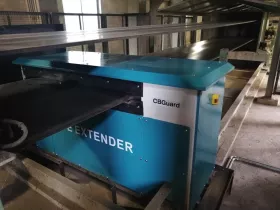
The CBGuard scanner compares the recorded values with the target values in real time. Every critical change triggers a damage-dependent reaction. In addition, the exact thickness of the entire conveyor belt can be measured and output as a contour map.
The CBGuard Life Extender detects internal damage such as rope breakage, corrosion, bubbles, misplacements and other defects in the tension member steel cords. The same applies to certain belt protection inserts and conductor loops. Damage such as holes, foreign bodies, protruding ropes, edge breakage, uneven abrasion of the covers and even insufficient belt cleaning are detected. Each defect automatically generates a predetermined, individual reaction.
Inspection without Standstill
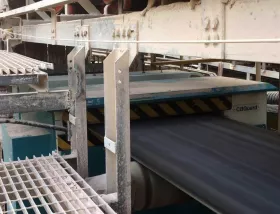
It is not necessary to inspect conveyor systems regularly at creep speed or at standstill and thus accept a loss of output. The CBGuard does this autonomously during normal conveying. Belt repairs are carried out neither too early nor too late. The CBGuard reports objectively and in detail what damage there is, where it is and how it can be remedied.
This also offers advantages in terms of investment, as the CBGuard provides information about when and which part of the belt is worn. In many cases, only partial lengths have to be changed, not the entire belt length. This also has advantages in terms of warehousing, as operators no longer need to keep extensive stocks of belts, since the CBGuard predicts in good time when the belt will need to be replaced.
Information on the results is also available at any time in the form of photos, videos or inspection reports. And of course the belt can be observed live on the monitor. In case of serious problems, an SMS is automatically sent to the maintenance staff.
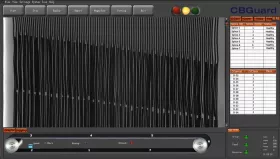
The CBGuard scanner prevents fatal consequences due to splice defects. As the weakest links in a conveyor belt, splices pose a greater risk to the operation – with potentially devastating consequences. The CBGuard Life Extender scans all splices. Each single splice is individually assigned in the database and compared with the target status. Any deviation generates an alarm or even a stop of the system in case of threatening defects.
No other method available on the market provides such a wealth of accurate results.
How it works
The CBGuard functions in a similar way to X-ray machines used in healthcare or airports. The device essentially consists of an X-ray generator with a tube, a receiver module and a control unit. The generator produces artificial X-rays from electricity. The ionizing rays penetrate the moving conveyor belt and then hit the receiver module, an amorphous silicon imaging field.
Countless images from thousands of grayscales are continuously generated and defined as a specific event (e.g. a damage) by the intelligent CBGuard software, taking into account their individual structure, size, color and position.
Using a CBGuard is safe. The device complies with all international regulations on radiation emission. The CBGuard contains no radioactive material!
Installation and Operation
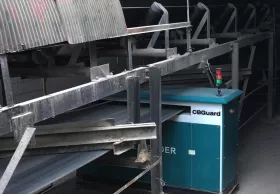
The compact design and the low weight of the CBGuard allow an easy and quick installation. The requirements are low; there is space in almost every belt conveyor. The scanner is almost wear-free because it has neither moving parts nor contact with the conveyor belt.
All functions of the CBGuard Life Extender can be remote controlled via TCP/IP. Maintenance or programming work is possible from anywhere. The analysis software runs under Windows 7 and 10. The program is intuitive and very easy to use.
CBGuard has proven itself in well over 300 conveyor systems. Many large copper mines in Peru and Chile rely on CBGuard. There are numerous other applications in Australia and Asia also in the limestone and coal sector.
Summary
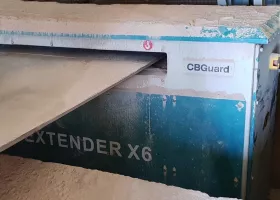
The CBGuard scanner guarantees a fully automatic, complete online monitoring of steel cord conveyor belts. Inspections by specialist staff and service companies are therefore superfluous.
The use of standard monitoring devices – e.g. optoelectronic or magnetic resonance methods – which only offer part of the spectrum of the CBGuard or whose measurements have to be interpreted by experts, is no longer necessary. These are great advantages which are even more important in times of crisis.
■
